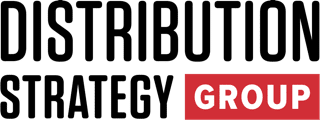It’s tough for distributors to quote prices when they don’t know how ever-changing tariffs will impact on the price they pay for goods.

“If we’re doing quotes, I say it’s good today or while I have the product in-house,” says Erika Scherman, president of distributor MC Tool & Safety Sales. “If I don’t have it, I say I will have to get you a new price.”
The uncertainty created by the Trump administration’s tariff policies have led many distributors to adopt “a war room-like mentality,” says consultant Barry Litwin, former CEO of distributor Global Industrial Co. “They’re getting together in meeting rooms, with product, supply chain, marketing and C-level executives all sitting around. After they’ve assessed impact of tariffs, they’re figuring out how they’re going to mitigate that, and how much can pass on to customers while still maintaining competitiveness.”
Short-term strategies include keeping in close touch with suppliers to stay on top of price changes, negotiating with customers on price, and in some cases canceling orders now subject to tariffs or rerouting shipments away from U.S. ports to avoid paying duties. For example, distributor Fastenal Co. is absorbing the added cost of rerouting some U.S.-bound shipments directly to Canada and Mexico, which account for about 15% of the company’s sales.
Longer term, some distributors are evaluating whether to shift their purchasing to suppliers that would not be subject to tariffs, or at least not that the prohibitive 145% tariff the U.S. has imposed on China, the largest supplier of goods to U.S. companies. Other options include investing in technology that can better set prices or cut operational costs.

But caution prevails, as no one knows what President Donald Trump will do next on tariffs.
“Everything can change next week if we back down from China and all this goes away,” Litwin said in an interview with Distribution Strategy Group on Tuesday morning. “But for now companies are not acting that way, they’re figuring how going to absorb this impact.”
Litwin’s comments proved prescient when only a few hours later the Trump administration began signaling a readiness to reduce China tariffs. First, Treasury Secretary Scott Bessent called the 145% tariff rate “unsustainable” and then Trump told a news conference that the China rate will “come down substantially, but it won’t be zero.”
What will that rate be like? And what about the tariffs the administration threatens to impose on other countries when its 90-day pause on so-called “reciprocal tariffs” ends? And what of the overall 10% levy on all imports and sector-level 25% tariffs on steel, aluminum and vehicles? All those questions remain unanswered, at least for now.
How to Set Prices Amid Uncertainty
Meanwhile, distributors must run their businesses. The most urgent questions for many distributors are how to prevent tariffs from raising their costs more than necessary, and how much of the cost increases they can pass on to customers.

Bay Supply, a distributor of rivets, bolts, other fasteners and related tools, has put on pause any orders from Chinese suppliers that have not yet shipped, says Michael Eichinger, chief operating officer. He says one of his Chinese suppliers is carrying out a previously planned move of one of its factories to Thailand, which will allow Bay Supply to purchase without the onerous China tariff.
But, with the Trump administration threatening new tariffs on many countries in July, Eichinger says setting prices is complex because he can’t be sure whether orders placed now will arrive after new tariffs are imposed. Even if a supplier promises a delivery date that would fall before the new tariffs, they may miss their targets because they don’t get raw materials in time, delaying production, he says.
During the first Trump administration, Eichinger says, Bay Supply absorbed $1 million in additional costs because shipments arrived later than expected and were hit by new tariffs. The distributor honored the prices it promised rather than raising its prices to customers.
“This time we can’t do that, and we are trying to be detailed as we can and focus on the timeliness of our responses to customers and working on a daily basis with suppliers to make sure we’re passing the correct prices on to customers and notifying them of any future price increases,” Eichinger says.
Suppliers are hitting distributors with price increases, often with little warning. Scherman of MC Tool & Safety says many prices have increased by 3-15%, with some going up as much as 25%. “And there’s always an asterisk that says, we can change prices at any time,’” she says.
Canadian distributor National Fire Equipment Ltd. this week sent a letter to customers saying several of its suppliers had raised prices, effective immediately, and explained how the company was responding. “With the unpredictability and lack of notice for price increases, we have rescinded all published price lists until further notice,” says the letter, which advises buyers to check current prices with sales and customer service reps.
Bay Supply has analyzed every pending order to determine the impact from higher prices for suppliers, Eichinger says. In some cases, the distributor has offered to absorb some of the higher costs if a customer orders more, for example, consolidating semiannual or quarterly purchases into a single order.
“Some have opted to do that, some have canceled orders, and some are moving to a different supplier who has a lower price,” he says.
Overall, Eichinger says Bay Supply’s sales this year have been “a mixed bag,” with some customers buying cautiously and others stocking up to get ahead of impending tariffs. At MC Tool & Safety, sales are down about 25% from last year, which Scherman attributes partly to harsh weather in Minnesota, her core market, and partly to the difficulty in quoting prices due to price volatility.
Switching Suppliers and Other Strategies
One option for distributors is to start purchasing from manufacturers in the U.S. or in countries less impacted by tariffs than China. But vetting new suppliers takes time and could backfire if the U.S. government changes course on tariffs.
Litwin says it can take two to six months to make sure that a new supplier can meet a distributor’s quality standards and deliver on time. But, he adds, “You can make a short-term shift into a new country, and then incremental tariffs are levied on that country three to four months down the line.”
Nonetheless, he says, nearshoring to the U.S. can make the most sense, if the costs of those products are not excessive to what you’re getting overseas.”
But Eichinger worries that Bay Supply could buy from a new supplier in the U.S. or elsewhere and then find itself with overpriced merchandise when China tariffs are lifted. “If suddenly tariffs were removed from China, it would cause a tremendous problem in overvalued stock that couldn’t compete,” he says.
Protecting Profits Amid Uncertainty
Litwin says there are several other ways distributors could minimize their risk from tariff fallout. That includes a distributor monitoring competitor pricing across its entire portfolio so that it can react quickly to rivals’ price changes. In some cases, a company may choose to pause offering products that it can no longer sell profitably.
Given the importance of pricing in this fluid environment, Litwin says distributors may want to invest in technology that enables them to keep up with competitors’ online prices daily. Companies without the resources to handle pricing internally could engage consultants to monitor pricing on their behalf.
Other options include automating processes across the company and taking other steps to reduce costs, making it easier to absorb higher supplier prices. Scherman says MC Tool & Safety has taken several steps to improve efficiency at the small distributor, including hiring a chief financial officer and working to give sales reps remote access to ERP data so they can better serve customers.
Beyond that, Scherman says, “We’re looking to get business in new places and reaching out to customers who haven’t bought recently to get them to buy again. We’re focusing on the people who know us and appreciate the service we give them. We’ve giving them a little more value-add and honing our tools.”
In other words, the distributor is sweating the details. And that’s a good strategy for all distributors in what’s likely to be a turbulent period ahead.
While tariffs seem sure to fluctuate significantly in coming months, distributors still must quote prices to customers today and make decisions about placing orders with suppliers—all while not being sure what their ultimate costs will be when products arrive at the U.S. border. Close attention to detail at the customer and product level will be key to helping companies stay profitable during this volatile period.
Don Davis, former editor-in-chief of Internet Retailer magazine and Vertical Web Media, is a freelance writer based in Chicago. His experience in retail and distribution goes back to his childhood when he worked in the toy wholesale business founded by his father and two uncles and in their discount department stores located throughout the New York metropolitan area.

